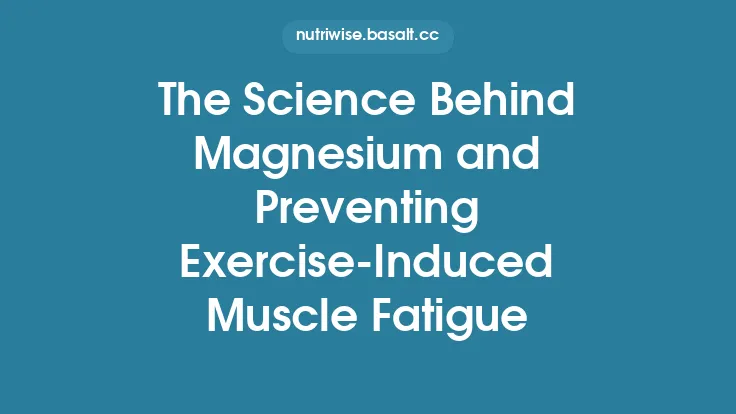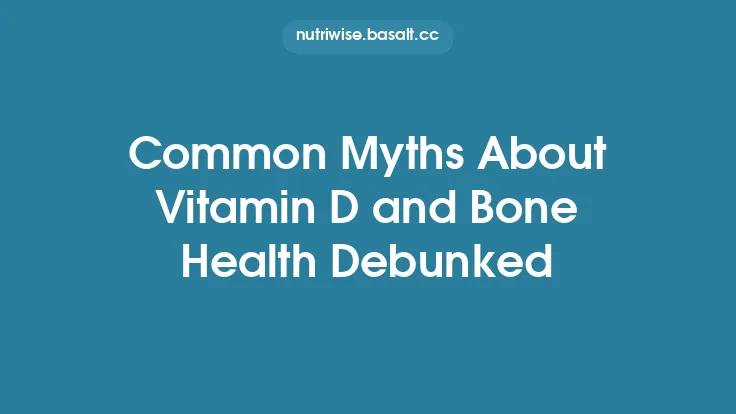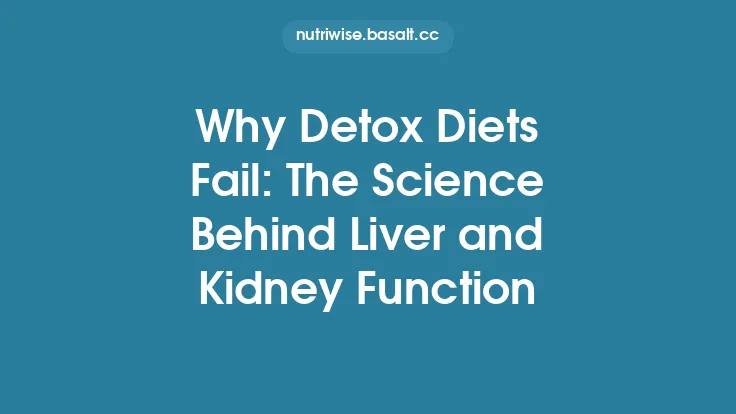Vitamin D is unique among micronutrients because the body can manufacture it endogenously, turning sunlight into a hormone that orchestrates the complex choreography of bone mineralization. Understanding the biochemical cascade—from the skin’s photochemical conversion to the molecular events that drive hydroxyapatite formation—reveals why maintaining an efficient synthesis pathway is essential for skeletal integrity throughout life.
Photochemical Initiation of Vitamin D Production in Human Skin
When ultraviolet B (UVB) photons (wavelengths 290–315 nm) penetrate the epidermis, they are absorbed by 7‑dehydrocholesterol (7‑DHC), a cholesterol precursor abundant in the stratum basale and spinosum. The energy transfer induces a photochemical cleavage of the B‑ring, converting 7‑DHC into pre‑vitamin D₃, an unstable isomer that undergoes a temperature‑dependent, thermally driven [sec‑butyl] rearrangement to form vitamin D₃ (cholecalciferol).
Key determinants of this step include:
- UVB irradiance – governed by solar zenith angle, atmospheric ozone, and cloud cover.
- Skin pigmentation – melanin absorbs UVB, reducing the photon flux reaching 7‑DHC.
- Dermal thickness and age – the epidermal concentration of 7‑DHC declines ~13 % per decade after age 30, diminishing substrate availability.
The newly formed vitamin D₃ is lipophilic and diffuses into the dermal capillary network, where it binds to carrier proteins for systemic transport.
Transport and Storage: The Role of Vitamin D Binding Protein
In circulation, vitamin D₃ is rapidly bound (>85 %) to vitamin D binding protein (DBP), a high‑affinity α‑globulin synthesized in the liver. DBP serves three critical functions:
- Solubilization – it shields the hydrophobic sterol from aqueous environments, extending its half‑life to ~2 weeks.
- Reservoir function – DBP‑bound vitamin D₃ constitutes the primary pool from which hepatic 25‑hydroxylation draws substrate.
- Targeted delivery – DBP interacts with megalin/cubilin receptors on proximal tubule cells, facilitating renal uptake for subsequent activation.
Genetic polymorphisms in the GC gene (encoding DBP) can alter binding affinity and circulating levels, influencing downstream vitamin D status independent of sun exposure.
Hepatic 25‑Hydroxylation: Converting Provitamin D to Calcidiol
The liver is the first enzymatic checkpoint. Vitamin D₃ (and dietary vitamin D₂) undergoes 25‑hydroxylation primarily via the microsomal enzyme CYP2R1, producing 25‑hydroxyvitamin D (25(OH)D, calcidiol). This reaction is considered constitutive—it proceeds at a relatively constant rate regardless of substrate concentration, ensuring a stable circulating pool that reflects cumulative vitamin D input.
Calcidiol is the principal clinical marker of vitamin D status because of its longer half‑life (~2–3 weeks) and higher serum concentrations (10–100 ng/mL) compared with the active hormone. Importantly, extra‑hepatic tissues also express CYP2R1, contributing to local calcidiol production that can be activated in a paracrine fashion.
Renal 1α‑Hydroxylation: Generation of the Hormone 1,25‑Dihydroxyvitamin D
The final activation step occurs in the mitochondria of renal proximal tubule cells, where 25(OH)D is hydroxylated at the C‑1α position by CYP27B1, yielding 1,25‑dihydroxyvitamin D (1,25(OH)₂D, calcitriol). This reaction is tightly regulated because calcitriol functions as a potent endocrine hormone with a short half‑life (~4–6 hours).
Regulatory inputs include:
| Stimulus | Effect on CYP27B1 |
|---|---|
| Parathyroid hormone (PTH) | Up‑regulation (↑ calcitriol) |
| Low serum phosphate | Up‑regulation (via fibroblast growth factor‑23 (FGF23) inhibition) |
| High calcium or calcitriol | Down‑regulation (negative feedback) |
| Inflammatory cytokines (e.g., IL‑1, TNF‑α) | Variable, often suppressive |
Renal expression of CYP27B1 declines with chronic kidney disease, contributing to disordered bone mineral metabolism in this population.
Regulatory Network Controlling 1α‑Hydroxylase Activity
Beyond the classic endocrine cues, a sophisticated network fine‑tunes CYP27B1:
- FGF23–Klotho axis: Elevated FGF23, secreted by osteocytes in response to phosphate excess, binds to Klotho‑dependent FGF receptors in the kidney, suppressing CYP27B1 transcription and stimulating CYP24A1 (catabolic enzyme).
- Sirtuin‑1 (SIRT1): Deacetylates transcription factors that enhance CYP27B1 expression under caloric restriction, linking metabolic status to vitamin D activation.
- MicroRNAs (e.g., miR‑125b): Post‑transcriptionally modulate CYP27B1 mRNA stability, providing rapid responsiveness to cellular stress.
These layers ensure that calcitriol production aligns with systemic mineral demands and metabolic context.
Catabolism and Inactivation Pathways: CYP24A1‑Mediated Clearance
Calcitriol’s potency necessitates efficient termination. The mitochondrial enzyme CYP24A1 initiates 24‑hydroxylation, converting 1,25(OH)₂D to 1,24,25‑trihydroxyvitamin D, which is further oxidized to water‑soluble calcitroic acid for renal excretion.
CYP24A1 expression is induced by:
- High circulating calcitriol (feedback inhibition)
- Elevated calcium and phosphate levels
- FGF23 signaling
Loss‑of‑function mutations in CYP24A1 cause hypercalcitriolemia, hypercalcemia, and ectopic calcifications, underscoring the enzyme’s protective role.
Cellular Mechanisms of 1,25(OH)₂D Action: VDR Signaling Cascade
Calcitriol exerts its biological effects primarily through the intracellular vitamin D receptor (VDR), a member of the nuclear receptor superfamily. Upon ligand binding, VDR undergoes a conformational change that enables heterodimerization with the retinoid X receptor (RXR). The VDR–RXR complex then translocates to the nucleus, where it binds vitamin D response elements (VDREs) in the promoter regions of target genes.
Key features of the VDR signaling cascade:
- Co‑activator recruitment (e.g., SRC‑1, p300) → chromatin remodeling and transcriptional activation.
- Co‑repressor displacement (e.g., NCoR, SMRT) → relief of basal repression.
- Post‑translational modifications (phosphorylation, sumoylation) that modulate VDR stability and DNA binding affinity.
VDR is expressed in virtually all cell types, but its density is especially high in intestinal enterocytes, osteoblasts, and osteoclast precursors—cells directly involved in bone mineral homeostasis.
Genomic Targets Relevant to Bone Mineralization
Through VDRE binding, calcitriol regulates a suite of genes that collectively orchestrate calcium and phosphate handling, matrix production, and remodeling:
| Gene | Primary Function | Relevance to Bone |
|---|---|---|
| TRPV6 | Apical calcium channel in enterocytes | Enhances intestinal calcium absorption |
| CALB1 (Calbindin‑D₉k) | Cytosolic calcium‑binding protein | Facilitates transcellular calcium transport |
| SLC34A1/2 (NaPi‑IIa/IIc) | Sodium‑phosphate cotransporters | Increases renal phosphate reabsorption |
| CYP27B1 | 1α‑hydroxylase (autocrine activation) | Local production of calcitriol in bone cells |
| RANKL (TNFSF11) | Osteoclast differentiation factor | Promotes bone resorption when needed |
| OPG (TNFRSF11B) | Decoy receptor for RANKL | Inhibits excessive osteoclastogenesis |
| COL1A1 | Type I collagen α‑chain | Provides organic scaffold for mineral deposition |
| ALPL (Tissue‑non‑specific alkaline phosphatase) | Hydrolyzes pyrophosphate | Removes mineralization inhibitor |
| PHOSPHO1 | Phosphatase in matrix vesicles | Generates inorganic phosphate for hydroxyapatite nucleation |
| SOST (Sclerostin) | Wnt pathway antagonist | Modulates osteoblast activity |
The balance between RANKL and OPG, both vitamin D‑responsive, is a pivotal determinant of the remodeling equilibrium.
Non‑Genomic Actions of Vitamin D in Bone Cells
In addition to transcriptional regulation, calcitriol triggers rapid, membrane‑initiated signaling events:
- Activation of phospholipase C (PLC) → generation of IP₃ and DAG, leading to intracellular calcium release.
- Stimulation of protein kinase C (PKC) and MAPK pathways (ERK1/2, p38), influencing osteoblast proliferation and differentiation.
- Modulation of calcium‑sensing receptor (CaSR) activity, enhancing the sensitivity of osteoblasts to extracellular calcium fluctuations.
These non‑genomic pathways can synergize with genomic effects, fine‑tuning the cellular response to acute changes in mineral availability.
Orchestrating Calcium and Phosphate Homeostasis
Calcitriol’s central role is to maintain serum calcium and phosphate within narrow physiological ranges, a prerequisite for orderly hydroxyapatite crystal growth. The hormone accomplishes this through coordinated actions:
- Intestinal absorption – up‑regulation of TRPV6, calbindin, and SLC34A transporters maximizes dietary calcium and phosphate uptake.
- Renal reabsorption – enhances distal tubular calcium reabsorption via TRPV5 and stimulates proximal tubular phosphate reclamation (via NaPi‑IIa/IIc).
- Bone remodeling – modulates osteoblast and osteoclast activity to release or deposit mineral as needed.
Feedback loops involving PTH (calcium‑raising) and FGF23 (phosphate‑lowering) intersect with vitamin D signaling, creating a dynamic equilibrium.
Vitamin D‑Mediated Regulation of Osteoblast Function
Osteoblasts, the bone‑forming cells, express VDR and respond to calcitriol by:
- Promoting differentiation – up‑regulation of RUNX2 and Osterix transcription factors, essential for lineage commitment.
- Enhancing matrix production – increased synthesis of type I collagen, osteopontin, and osteocalcin (the latter itself a VDR target).
- Stimulating alkaline phosphatase activity – critical for hydrolyzing pyrophosphate, a potent inhibitor of mineral nucleation.
Calcitriol also influences the expression of Wnt signaling components (e.g., LRP5/6, β‑catenin) and BMPs (bone morphogenetic proteins), integrating multiple osteogenic pathways.
Influence on Osteoclastogenesis via the RANKL/OPG Axis
While osteoblasts build bone, osteoclasts resorb it. Vitamin D exerts a dual effect:
- Up‑regulates RANKL in osteoblasts and stromal cells, providing the essential signal for osteoclast precursor differentiation.
- Simultaneously induces OPG, a soluble decoy receptor that binds RANKL, limiting its availability.
The net outcome depends on the relative expression of these two proteins, which is modulated by systemic calcium status, PTH levels, and inflammatory cytokines. In hypocalcemic states, the RANKL/OPG ratio shifts toward bone resorption, liberating calcium into the circulation.
Matrix Vesicles, Hydroxyapatite Nucleation, and the Mineralization Process
Mineralization initiates within matrix vesicles (MVs)—extracellular, phospholipid‑bound organelles released by osteoblasts. Vitamin D influences MV function through several mechanisms:
- Up‑regulation of PHOSPHO1 – a phosphatase that generates inorganic phosphate (Pi) inside MVs.
- Induction of tissue‑non‑specific alkaline phosphatase (TNAP) – hydrolyzes extracellular pyrophosphate (PPi) to Pi, reducing inhibition of crystal growth.
- Modulation of annexins (e.g., ANXA5) – calcium channels that facilitate Ca²⁺ influx into MVs.
The resulting supersaturation of Ca²⁺ and Pi within the vesicle lumen leads to nucleation of hydroxyapatite (Ca₁₀(PO₄)₆(OH)₂). These nascent crystals then propagate into the collagenous matrix, achieving the organized, plate‑like mineral architecture characteristic of mature bone.
Integration with Other Hormonal Systems: PTH, FGF23, and Calcitonin
Bone mineral homeostasis is a concerted effort among several endocrine players:
- Parathyroid hormone (PTH) – raises serum calcium by stimulating renal 1α‑hydroxylase, enhancing calcium reabsorption, and promoting osteoclastogenesis via RANKL. Vitamin D amplifies PTH’s effects on calcium absorption but also provides a feedback brake by suppressing PTH synthesis when calcium is sufficient.
- Fibroblast growth factor‑23 (FGF23) – secreted by osteocytes in response to elevated phosphate or calcitriol; it down‑regulates CYP27B1 and up‑regulates CYP24A1, curbing active vitamin D levels and promoting phosphaturia.
- Calcitonin – released from thyroid C‑cells during hypercalcemia; it directly inhibits osteoclast activity, providing a rapid, albeit modest, counterbalance to vitamin D‑driven resorption.
The interplay of these hormones ensures that calcium and phosphate fluxes are matched to the demands of growth, repair, and remodeling.
Age‑Related and Genetic Modifiers of Vitamin D‑Driven Bone Mineralization
Several factors modulate the efficiency of the vitamin D synthesis–mineralization axis across the lifespan:
- Skin aging – reduced 7‑DHC content and dermal thinning lower cutaneous vitamin D₃ production by up to 50 % in individuals >70 years.
- Renal function decline – decreased CYP27B1 activity in chronic kidney disease impairs calcitriol generation, contributing to renal osteodystrophy.
- Polymorphisms in genes such as CYP2R1, CYP27B1, VDR (FokI, BsmI, ApaI, TaqI), and GC influence circulating 25(OH)D levels, VDR activity, and downstream bone outcomes.
- Obesity – sequestration of vitamin D in adipose tissue reduces its bioavailability for hepatic hydroxylation.
Understanding these modifiers helps explain inter‑individual variability in bone density and fracture risk, even when sun exposure appears adequate.
Current Research Frontiers and Emerging Therapeutic Insights
- Localized activation – engineering osteoblast‑specific expression of CYP27B1 to boost autocrine calcitriol production without systemic hypercalcemia.
- VDR agonists – selective VDR modulators (e.g., elocalcitol) that retain bone‑protective genomic effects while minimizing calcium‑raising side effects.
- Nanocarrier delivery – vitamin D‑loaded liposomes targeted to bone matrix vesicles, aiming to enhance mineral nucleation in osteoporotic bone.
- Epigenetic regulation – mapping vitamin D‑responsive enhancers in osteoblast chromatin to identify novel therapeutic targets for dysregulated mineralization.
These avenues reflect a shift from simply correcting deficiency toward fine‑tuning the vitamin D signaling network for optimal skeletal health.
Practical Takeaways for Maintaining Endogenous Vitamin D Synthesis
- Maximize safe UVB exposure – short, regular exposures (e.g., 10–15 minutes mid‑day for light‑skinned individuals) can sustain adequate cutaneous production without excessive skin damage.
- Protect against age‑related decline – consider lifestyle strategies that preserve skin health (e.g., moisturization, avoidance of chronic photodamage) and monitor renal function in older adults.
- Screen for genetic variants when unexplained low 25(OH)D or bone fragility occurs, as personalized dosing may be required.
- Support the enzymatic cascade – ensure adequate magnesium and zinc intake, cofactors essential for hepatic and renal hydroxylases.
- Balance the hormonal milieu – maintain calcium and phosphate intake within recommended ranges to avoid maladaptive feedback that suppresses vitamin D activation.
By appreciating the intricate science that links sunlight to the microscopic events of bone mineralization, individuals and clinicians can adopt evidence‑based strategies that preserve skeletal strength across the lifespan.





